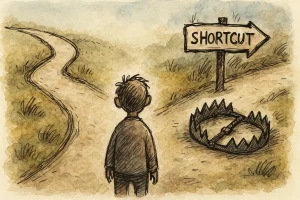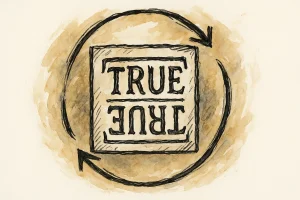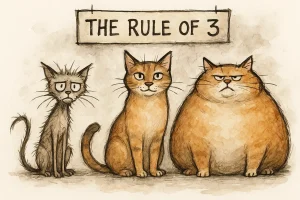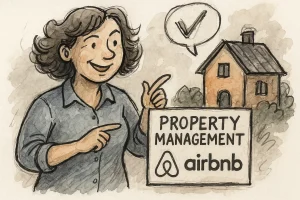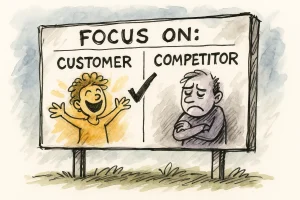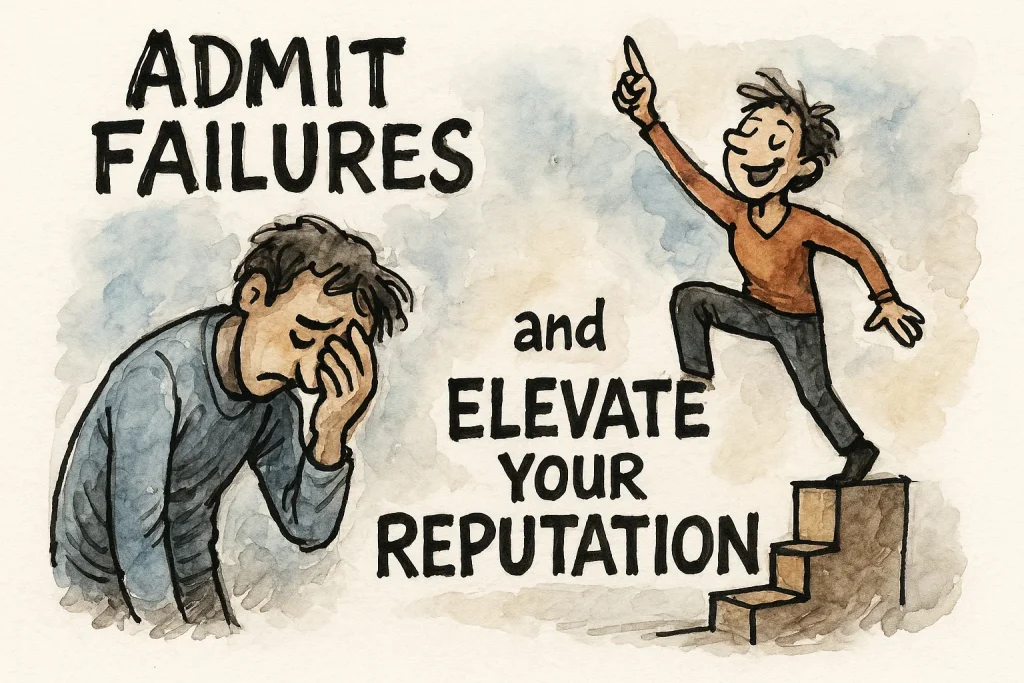
In any scenario, mistakes are inevitable. In the corporate world, it’s common for deadlines to pass, numbers to “slip,” and projects to go off track. Even so, the greatest threat to a leader or team’s credibility is not the slip-up itself, but the attempt to sweep it under the rug. Pretending to be perfect, discrediting those who point out failures, or blaming external factors causes far more damage than the initial mistake.
What separates amateurs from professionals is how they face failure. Everyone makes mistakes — professionals stand out in their response. Mature professionalism is not measured by the number of errors, but by the speed, transparency, and responsibility with which the correction is handled. By adopting an “ownership of the problem” mindset, professionals turn small disasters into demonstrations of competence and character.
Here’s a step-by-step guide to preserving (or even increasing) trust when something goes wrong:
- Get straight to the point. Explain what happened without beating around the bush, jargon, or confusing excuses. Clarity creates security.
- Own your part. Don’t outsource responsibility. Saying “I made a mistake” closes the door to speculation and opens the conversation honestly.
- Share the learning. Showing the insight gained from the mistake signals growth, not stagnation.
- Present corrective actions. Detail what has been done or will be implemented to mitigate the impact. A clear action plan demonstrates real commitment.
- Ensure it won’t happen again — and explain why. Show structure: new processes, checklists, automation, peer reviews. Without mechanisms, the promise becomes empty.
Trust is a valuable asset. Transparency pays off more than perfectionism. Leaders who recognize, learn from, and resolve mistakes earn more respect than those who try to appear infallible. This approach projects maturity, inspires teams to take responsibility, and reduces the financial impact of extended rework due to denial.
Making mistakes doesn’t disqualify anyone. What defines a professional’s reputation is how they respond to mistakes. Errors teach. Transparency, responsibility, and quick corrections not only preserve credibility – they elevate it. After all, trust is born from truth, not appearances.
That’s it.

